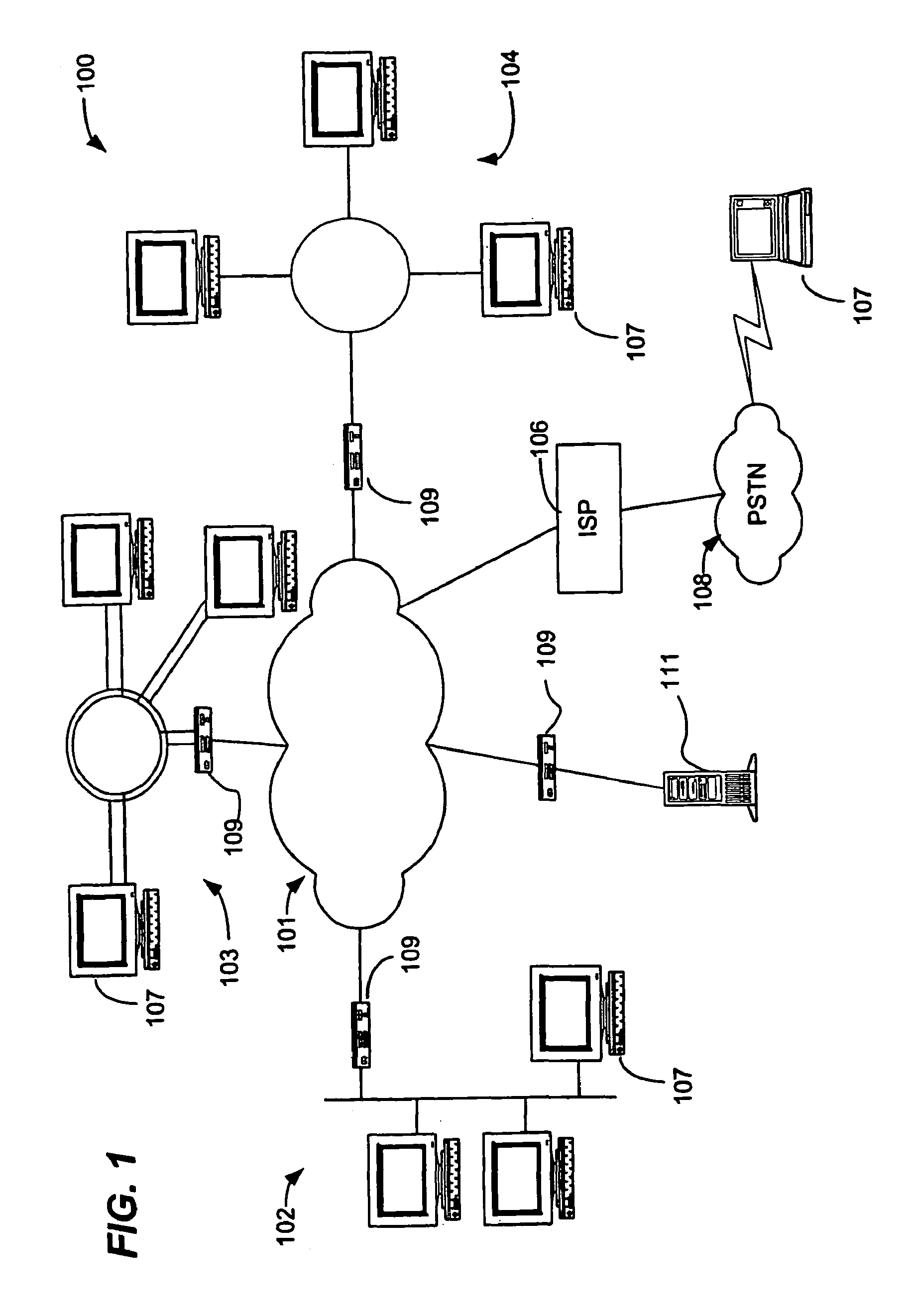Implementing or modifying functionality in a lower layer protocol is very difficult as such changes can affect almost all users of the network.
Devices such as routers that are typically associated with infrastructure operate exclusively at the lower protocol
layers making it difficult or impossible to implement functionality such as real-
time processing,
data compression,
encryption and error correction within a network infrastructure.
Also by design, it is difficult to accurately predict or control the
route a particular packet will take through
the Internet.
As a result, however, a particular node or
machine cannot predict the capabilities of the downstream mechanisms that it must rely on to deliver a packet to its destination.
For example, it is difficult if not impossible to conduct synchronous or time-aware operations over the Internet.
While each IP packet includes information about the time it was sent, the time base is not synchronous between sender and
receiver, making the time indication inaccurate.
Packets are buffered at various locations through the Internet infrastructure, and there is no accurate way to ascertain the actual age or time of issue of the packet.
Hence, critical packets may arrive too late.
Infrastructure components responsible for sending the information between the sending and receiving processes do not analyze whether effective compression has been performed, nor can the infrastructure implement compression on its own.
Where either the sending or receiving process is incapable of effective compression, the data goes uncompressed.
This creates undesirable burden that affects all users.
However, FEC is not used within the Internet infrastructure.
This stems in part from the additional complexity, cost and management tasks that such capability would impose on the
system hardware and
software.
In practice there are multiple standards for real-
time processing,
encryption, compression, and error correction, and one or the other node may be unable to support the protocols of the other nodes.
For example, implementing error correction only between the sending and receiving nodes is only a
partial solution, as the infrastructure components that operate at lower network
layers (e.g., transport, network,
data link and / or
physical layer) cannot read error correction codes inserted at higher network
layers.
Many e-commerce transactions are abandoned by the user because
system performance degradations frustrate the purchaser before the transaction is consummated.
While a transaction that is abandoned while a customer is merely browsing through a catalog may be tolerable, abandonment when the customer is just a few clicks away from a purchase is highly undesirable.
However, existing Internet transport protocols and systems do not allow the e-commerce site owner any ability to distinguish between the “just browsing” and the “about to buy” customers as this information is represented at higher network layers that are not recognized by the infrastructure components.
In fact, the vagaries of the Internet may lead to the casual browser receiving a higher
quality of service while the about-to-buy customer becomes frustrated and abandons the transaction.
Likewise, with regard to communications in general, the casual communications may undesirably receive higher
quality of service than more critical or crucial communications.
The vagaries and distributed nature of the Internet also make accurately characterizing or predicting the behavior of the network at any given time a complex task.
Again, this makes it more difficult for a
network administrator to precisely identify the path that the traffic between, for example, two customer sites, is following when traversing the network.
As a consequence, upon identifying a highly congested link, a
network administrator has no or only limited
visibility into which customers may be experiencing poor performance as a result of this congestion.
Similarly, in the presence of a link failure, identifying which customers are immediately affected as well as predicting which ones may also experience a change in service performance shortly after the failure is again a very complex task in IP networks.
Management tools do exist for IP networks, but they are typically reactive or operate at a coarse
granularity, i.e., not at the level of the end-to-end performance of an individual customer or site.
However, this information is local to each device, and does not offer a network wide perspective.
Furthermore, piecing together MIB information from multiple routers to derive end-to-end performance measures of relevance to a given customer is not an easy task.
A similar limitation exists when relying on traffic monitoring information that is routinely gathered at routers using mechanisms such as Cisco's
NetFlow™ or
Juniper Cflowd™.
These monitoring devices capture detailed information about the traffic crossing a given interface, but again do not have the ability to identify end-to-end paths.
Converting such traffic
monitoring data into end-to-end intelligence is a laborious task.
However, solutions based on utilities such as ping and
traceroute often are not desirable because they are neither scalable nor capable of providing real-
time information about the
network behavior as a user experiences it.
 Login to View More
Login to View More  Login to View More
Login to View More 


